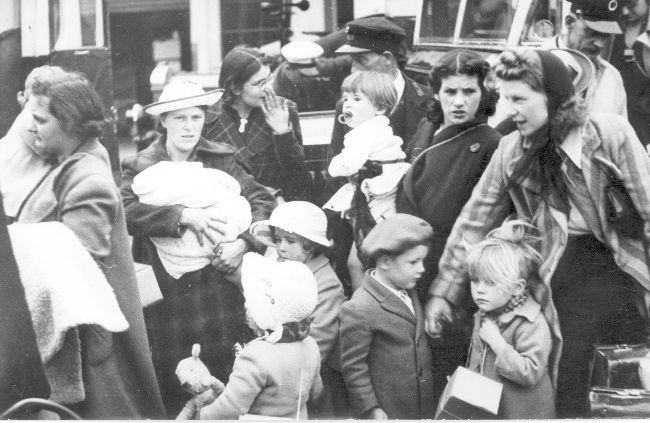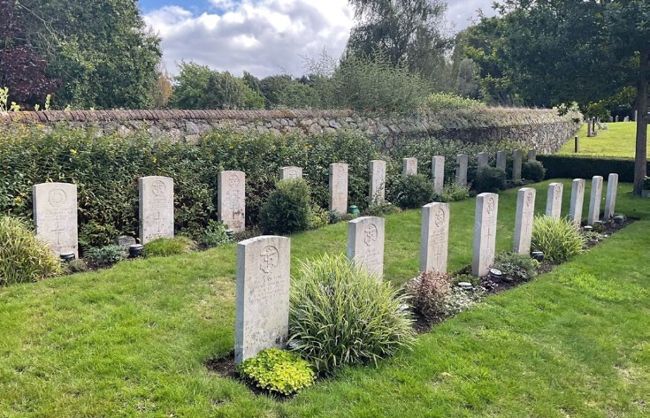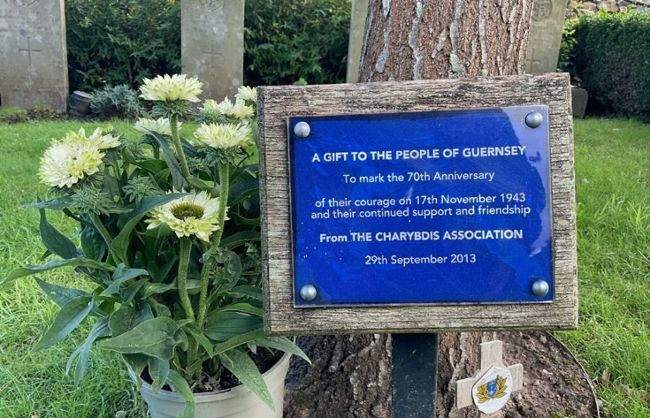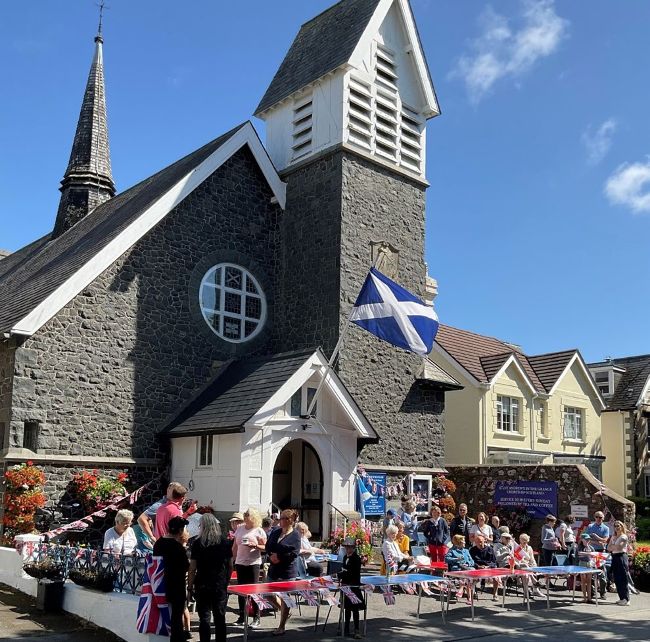Islands under occupation
In the month of Remembrance, Jackie Macadam learns about the wartime experience of one Channel Islands church and the legacy of a deepened connection with Scotland.
DURING the Second World War people across Britain suffered air raids, bombings, destruction. Docks were hit.
Neighbourhoods were levelled. People died.
But the experience of war was very different for one group of people. The Channel Islands saw it from the point of view of an occupation.
Paul Riley, an elder at St Andrew’s in the Grange Church of Scotland in Guernsey, has been fascinated by the war time experience of the islands for years.
“I’ve been researching the history of the island churches at war, with some other elders here, Hilary, Alastair and Dick, and Gillian, a local historian. It’s been a real eyeopener for us all,” he said.
“In early 1940 it became clear that the approaching German army would occupy the Channel Islands. Located 75 miles from the English coast the islands were not strategically important for the defence of Britain but Adolf Hitler regarded them as a desirable trophy and included them in his heavily fortified Atlantic Wall.
“Those islanders who could, left for the mainland. Young men joined the Allied armed forces. Out of an island population of 42,000 approximately 5,000 children and 12,000 adults were evacuated, many to Scotland.
On June 30 1940 the first German troops landed and thus began nearly five extraordinary years of military occupation.
“Most households faced separation from loved ones. Those who remained awaited their fate.
“My Auntie Betty, born in Arbroath and married to a Guernseyman, boarded the last boat, according to family legend, with six silver teaspoons in one hand and her baby daughter under her arm.
“On June 30 1940 the first German troops landed and thus began nearly five extraordinary years of military occupation.
“Food supplies dwindled, petrol was forbidden, a curfew was imposed, radios were banned.
“Incarceration in concentration camps in Germany was the sentence for even minor civil disobedience or simply for British parentage. More than 800 islanders were deported to Biberach in Southern Germany.
A number of these deportees never returned.
“Three girls identified as Jewish were deported to Germany where their final destination was Auschwitz-Birkenau. It was a horrific time.
“German officers were billeted in many households,” he explained. “One tragic episode occurred in our family, when a German officer in an upstairs room accidentally discharged his rifle whilst cleaning it. The bullet passed through the floor killing my wife’s grandfather downstairs. It was awful.

St Peter Port Harbour during evacuation.
Credit: Priaulx Library digital archive
“Our Presbyterian Church, not yet a Church of Scotland, was determined to survive though it faced severe challenges. “The office-bearers, hugely resilient people, kept records which have fortunately survived. “The minister, the Rev J Westland Rose died in office on 22 September 1940, a year after the war had started and three months into the German occupation. The Senior Elder, Kenneth Munro then wrote to his counterpart in Jersey, which was also under German occupation, asking for advice. The reply came back appointing Mr Munro himself to act as Interim Moderator. In 1942 Mr Barnett, the Senior Clerk in Guernsey (what we would call the Clerk to the Congregational Board) was deported and interned in Germany. He was replaced by a Mr Opie.
“Probably the most restrictive edict of the Occupying Forces was the limiting of public meetings to no more than seven people.
“Our Church found a way round this problem by holding small prayer meetings in people’s houses four times a week, all of which were attended by Mr Opie. Regular contact was thus maintained among the congregation, spiritual support was shared and news of the war, gleaned from illegal wireless sets, was circulated.
“The records show that in 1941 they even managed to hold a sort of Annual General Meeting. Those attending were Mr Munro, the Interim Moderator who was also the Session Clerk, Mr Wilson, a blacksmith by trade who was the Treasurer, Mr Barnett, the Clerk to the Board and a Mr Dorey who not only audited the accounts but acted as the sole representative of the congregation. It was a real achievement under very trying circumstances.

Graves of the shipwrecked sailors from HMS Charybdis and HMS Lambourne.
Credit: Paul Riley

Foulon Cemetery, Guernsey.
Credit: Paul Riley
“In January 1944 a Church Officer, (sorry, we have not found his name), was imprisoned and the Clerk was instructed to write to him stating that ‘owing to the regretful circumstances in which he found himself it was found necessary to appoint another man in his place’. At a church meeting in September 1944 Mr Wilson praised the way in which giving had been maintained during the occupation. At the same meeting Mr Opie commented on the wonderful power in the prayer meetings that were regularly held.”
But the congregation did much more than maintain the church and its governmance.
“On 23 October 1943, tragedy was heaped on tragedy when HMS Charybdis and HMS Limbourne were sunk in the English Channel by German torpedo boats. Twenty-three bodies washed onto the shores of Guernsey. To their credit the Occupying Forces approved burial at the Foulon Cemetery with full military honours, but islanders were to be excluded from attendance,” says Paul, “but in an act of defiance to this ruling, more than 5,000 people arrived from all over the island with 900 wreaths to demonstrate their respect for the dead and their loyalty to Britain.”
Following the Normandy Landings in early June 1944, conditions on the island became progressively harsher and supply lines to Guernsey from both Britain and Europe were cut off. Starvation point on the islands was almost reached but the Red Cross ship Vega brought relief in late 1944, just in time.
“Finally, as dawn broke on Wednesday 9 May 1945 peace returned to Guernsey. Off the coast lay two destroyers, HMS Bulldog and HMS Beagle. The advance party of 22 Artillerymen was swamped by cheering islanders. Liberation had been achieved.
“The process of Reconciliation began just before the ending of the Occupation. On the eve of Liberation, the German Chaplain held a service in St Sampson’s Church at which the text for his sermon was Hosea 6 v.1: ‘Come, let us return to the Lord. He has torn us to pieces, but he will heal us; he has injured us, he will bind up our wounds.’
“Understandably, the years which followed Liberation were extremely difficult for islanders coming to terms with what they had experienced.

Waiting for the visit of King Charles and Queen Camilla.
Credit: Paul Riley
“Instigated by the Guernsey Council of Churches in 1997, a friendship between Guernsey and Biberach, the town to which islanders were deported to during the war, has been forged. Cultural visits and concerts have taken place. We are now twinned.
“Another legacy of the occupation is Charybdis Sunday. Every year a wellattended service in the Foulon Cemetery is held to respect those sailors who drowned 81 years ago.
“During the Occupation we had no minister. Several other churches had also lost theirs, so we shared what we had and a rota was set up for Communion with Methodist and Elim Churches. When no ministers were available our elders conducted these services themselves. This ecumenical and self-sufficient spirit remains strong.
“There have been other consequences of those dark years of occupation,” he explained.
“Oddly enough, we have become more Scottish. After the war thousands of children, now five years older, returned to Guernsey having made new friends with whom they have maintained ties.
“In 1972 the Presbyterian Church of England amalgamated with the Congregational Church of England to become the United Reformed Church. In Guernsey we were faced with a choice. Should we also abandon Presbyterianism? Happily, we voted to petition the Church of Scotland to join as a congregation in the Presbytery of England and we were accepted.
“Following Liberation in 1945, with much excitement, on June 6 King George VI and Queen Elizabeth visited the island. It was decided to place the chairs from the hall in front of the church so that members and friends could wave to the royal couple on their way to Government House. Afterwards there was a celebration in the hall with entertainment for the children.”
Following in the footsteps of their forebears, King Charles III and Queen Camilla visited the islands in July 2024, cementing the unique relationship between the Islands and the Crown. ¤